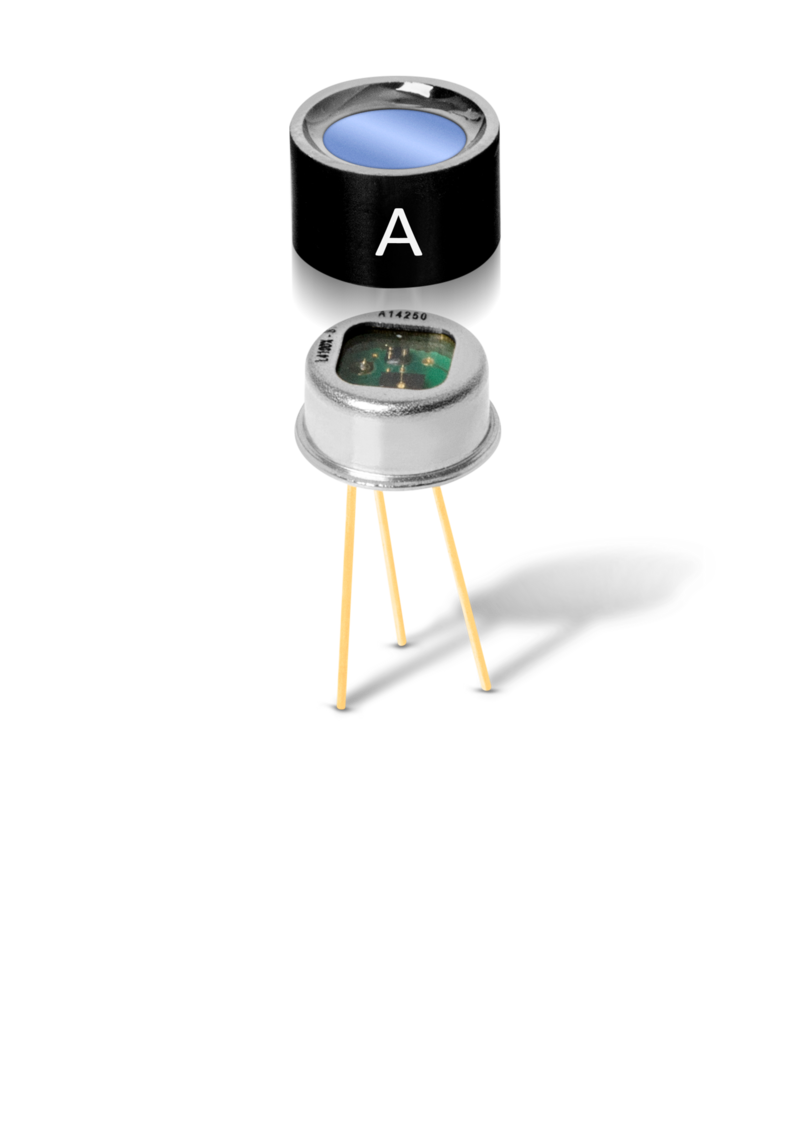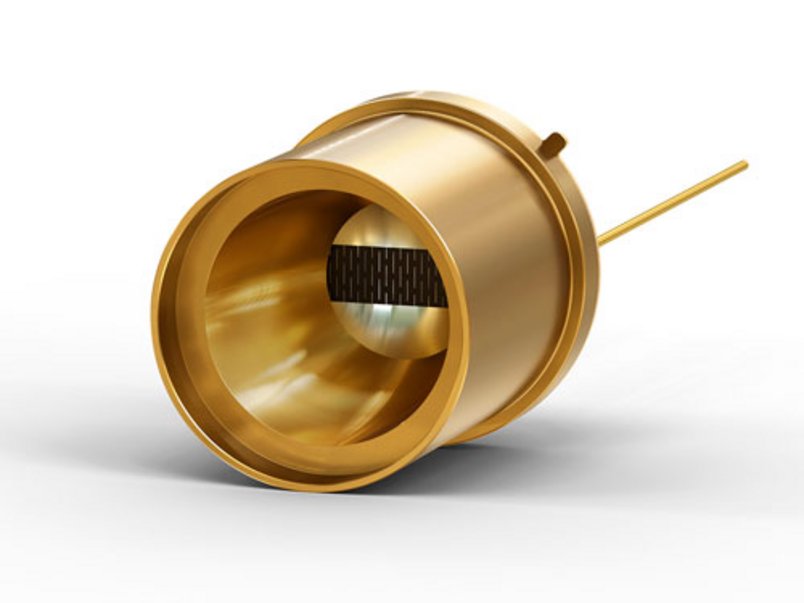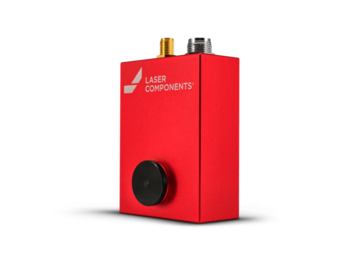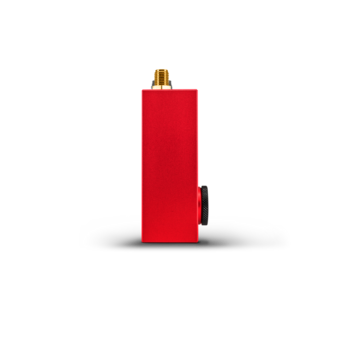High-End Pyro Receivers
The PR series pyroelectric receivers are a perfect blend of high-quality detector technology and high-end electronics.
The Pyroelectric Receiver No1 is a universal workhorse for precise measurements - especially in the long-wave infrared (LWIR) and THz range where conventional semiconductor detectors with thermo-electric cooling reach their limits. The versatile component is available in an IR and a THz variant. Its 3 dB bandwidth is 8 kHz and its linearity over 4 decades is better than 1%. You can make corrections to your own measurement data using the included individual measurement protocol.
Pyroelectric detectors are inherently spectrally flat and thus detect wavelengths in MIR and NIR, visible light, and even shorter wavelengths.
The Pyroelectric Receiver No1 is a key component towards a "democratic" FTIR and for QC laser-based application development above 10 µm.
Contact
Benefit
- Setup the receiver within a couple of minutes to measure the first signal!
Features
- IR Version: KBr window for wavelengths from 200nm - 30µm
- THz Version: HDPE window goes well beyond 60µm
Our IR Detectors
Panchromatic, photoconductive and thermal detectors
InGaAs PIN Photodiodes
Modern InGaAs PIN photodiodes are panchromatic and convert broadband light to photocurrents in the Vis-NIR range. Concretely speaking, this means a sensitivity range from 500 nm to 1700 nm for regular InGaAs and – in increments – up to 2600 nm for extended InGaAs. Variations for data transmission are not panchromatic.
PbS and PbSe Detectors
PbS is a standard SWIR semiconductor detector (1 - 3.3 µm) whereas PbSe is used in the MWIR range (1 - 4.7 µm when uncooled; up to 5.2 µm when cooled). Our lead salt detectors are photoconductive; the detector resistance is reduced during illumination. The crystal structure is polycrystalline and is produced via chemical deposition.
Pyroelectric IR Detectors
A pyroelectric IR detector is a thermal detector in that it responds to the change in heat (IR) absorbed on its surface. Thermal detectors are polychromatic with a very wide spectral bandwidth.
The nature of the pyroelectric effect is that in a highly-ordered crystal (or ceramic), a temperature change in the element causes its atoms to move slightly out of position. This rearranges its electrical charge, which is measured in the electrodes on its surface.
The pyroelectric effect is found in many materials. The most commonly-used materials are deuterated lanthanum α alanine-doped triglycine sulfate (DLaTGS) and lithium tantalate (LTO).

Get Support
from the product manager


Our experts
Will assist you
in setting up
the receiver.
+ It will only take some minutes.
Click here to schedule a meeting with Tim Huylebrouck, Product Engineer at LASER COMONENTS Germany.
What is Your Challenge?
Beyond Borders


LASER COMPONENTS Detector Group, Inc.
FAQs
What you should know about our PR No1
What wavelength range can be measured?
The KBr window for the IR version opens at about 200 nm and goes to about 30 µm, while the HDPE window for the THz version goes well beyond 60 µm.
What is the output signal of the receiver?
The output signal is an analog Voltage signal in the range of -8 V to +8 V
What is the detection speed?
The 3dB cut off frequency is 8 kHz. Measurements are possible from 1 Hz to even 100 kHz, but the detector is made for frequencies around 1-2 kHz, where there is no need for overly complex interpretation of the output signal.
What is the advantage of the receiver compared to the LTO detector itself?
The receiver makes it significantly easier to get useful signals from your sources. Not only massively speed up the detector, it also does this with very low noise and you also do not need to take care of any offsets, as the output signal base line is 0 V. Furthermore, and quite obviously, there is no need of soldering any detectors to an own driver electronics.
What are the main use cases for the receiver?
Typical use cases are THz detection or spectroscopic applications in FTIR instruments. But we also see more exotic use cases like laser power measurements, where it is nice to have a pyro electric element for detection that integrates the measured power even for very fast lasers without complex effects that quantum devices usually create.
How good is the linearity of the receiver?
We have measured a deviation of linearity of < 1% over four decades of input power.
How does the receiver compare against MCT detectors?
MCT detectors are much faster, that is clear. The receiver however goes well beyond 12 µm, opening completely new fields of applications. It operates at more than 50°C ambient temperatures, which is very difficult with MCT detectors. Although the operating temperatures of MCT detectors often is marked as +70°C, but the important information what happens to the shunt resistance at such temperatures is missing. The PR N°1 still works at these temperatures like at any other room temperature. Another advantage is the linearity over four decades. MCT detectors typically are linear only over 2 decades.
Does the receiver need to be cooled?
No, it is a completely uncooled device.
Related Products
Beyond Borders
Accessories


Advanced single channel voltage mode detectors for FTIR instruments.


Pyroelectric crystals generate positive and negative charge carriers simultaneously on opposing sides. The LD21xx series is the first series in which both crystal sides are amplified separately.


An IR filter makes all the difference. Thermal detectors are naturally polychromatic, and a filter is needed to detect specific gases/wavelengths.
News & Events
from the infrared world



















LASER COMPONENTS France - Your competent partner for optical and optoelectronic components in France.
Welcome to LASER COMPONENTS S.A.S., your expert for photonics components. Each product in our wide range of detectors, laser diodes, laser modules, optics, fiber optics, and more is worth every Euro (€/EUR). Our customized solutions cover all conceivable areas of application: from sensor technology to medical technology. You can reach us here:
45 Bis Route des Gardes
92190 Meudon
France
Phone: +33 (0) 139 595 225
Email: serviceclient(at)






